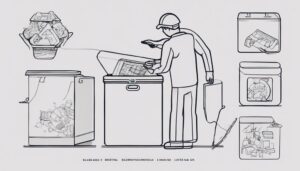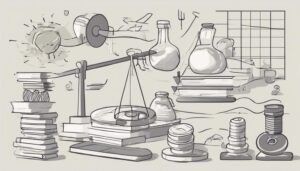As the saying goes, ‘You can’t have your cake and eat it too,’ but when it comes to wind farm payouts, you’re likely wondering if there’s a way to benefit from green energy without the bitter taste of escalated costs.
In today’s landscape, the financial dynamics of wind power projects have become as complex as the turbines towering over our rural skylines. You’re standing at the precipice of a significant shift: New York’s latest wind farm proposals have set a precedent with higher rates, which has sent companies scurrying to revise their numbers.
This uptick in electricity rates could have profound implications on both the affordability and the appeal of renewable energy to the average consumer. As you consider your role in this energy transition, it’s crucial to understand the intricate details of wind farm land leases, payment structures, and contract negotiations.
It’s the only way you’ll grasp the true cost of the wind blowing through your wallet and the potential strategies to ensure that these costs don’t upend the push towards a greener future.
Wind Farm Land Leases Explained
Amidst the rising costs of wind-power projects, it’s crucial to understand how wind farm land leases play a pivotal role in the economics of renewable energy development.
As you’re likely aware, the energy industry is rapidly pivoting towards renewable sources, with wind energy at the forefront. In New York, the state is pushing for a greener future, but higher costs are causing a stir.
When offshore wind developers and those in the onshore wind sector look to establish a wind farm, they enter into land leases—agreements that allow them access to the land or sea floor necessary for their turbines.
These leases are long-term commitments, and with costs on the rise, they’re becoming a significant factor in the overall expense of wind power projects. The supply chain, from manufacturing to installation, feels the ripple effects of these changes.
For you, the consumer, this means the transition to renewable energy, though beneficial for the environment, might lead to higher electricity bills. Especially for low-income households, this is a pressing concern.
Addressing these escalating costs isn’t just about adjusting numbers; it’s about innovation within the industry. It’s about finding collaborative ways to streamline operations, cut down on expenses, and ultimately, keep wind power a viable and affordable energy option for you and future generations.
Calculating Land Lease Rates
Understanding the complexities of wind farm land leases is essential, as they have a direct impact on your energy costs. A key component of these leases is how land lease rates are determined. Typically, these rates are a slice of the project’s revenue—an arrangement that benefits both you, the landowner, and the wind farm developer.
Imagine you’re in New York, where the wind energy industry is booming, thanks in part to Copenhagen Infrastructure Partners’ recent venture with Ocean Winds. They’re opening new opportunities, and with the Inflation Reduction Act in place, there’s a solid plan to decarbonize the energy sector. Given this backdrop, your land lease rate might include a fixed annual payment coupled with a share of the wind farm’s gross revenue, reflecting the project’s financial health.
The size of the wind farm, its location, and the competitive local market conditions can all tweak these rates. Some developers might offer a per-acre payment, pegged to the land’s energy-generating potential. Ultimately, the final figure comes down to negotiation, aiming for terms that satisfy both parties.
It’s about striking a balance that supports the growth of wind as a sustainable energy source while ensuring fair compensation for your valuable contribution to this green revolution.
Landowner Payment Structures
When you lease your land to a wind farm developer, you’ll typically encounter a variety of payment structures, ranging from fixed annual rents to royalties tied to the turbines’ electricity production. The energy industry is evolving, and with it, the ways people profit from renewable resources.
In York state, for example, the push towards mitigating climate change has amplified the significance of wind energy, influencing landowner payment agreements.
You might receive a steady income through fixed payments for each acre occupied by these towering symbols of clean energy. This provides a predictable revenue stream, regardless of how much electricity the turbines generate. Alternatively, some landowners opt for a more variable approach, combining fixed rent with royalties that ebb and flow with the turbines’ output.
These royalty payments align your interests with the wind farm’s success, as you’ll earn more when the turbines harness more wind. It’s a partnership that places you at the forefront of the shift away from Fossil Fuels (TRBC level) and towards a sustainable future.
Moreover, entering into a joint venture with Electric Utilities (TRBC) or Electric Utilities (NEC) (TRBC level) could further maximize your land’s value. Every contract is unique, so it’s crucial to understand the specifics and negotiate terms that align with your financial goals.
Influences on Lease Payments
As you consider the potential income from leasing your land for wind energy, it’s crucial to recognize how external factors can shape the lease payments you might negotiate. Soaring costs, driven by market dynamics, can lead to higher payouts, while policy support might sweeten the deal further. Collaboration among stakeholders, including major players like Corio Generation and Electric Utilities (TRBC), is key in shaping these agreements.
Gather insights from worldwide sources, as industry events and directly related market data and insights can provide a clearer picture of what to expect. Understanding how the Energy (TRBC level) and Utilities (NEC) (TRBC level) sectors operate can give you an edge in lease discussions. Here’s a snapshot to help visualize the influences:
| Influence Factor | Impact on Lease Payments |
|---|---|
| Rising Project Costs | Potentially Higher |
| Renewable Energy Affordability | Negotiable Terms |
| Policy Support and Incentives | Favorable Agreements |
| Industry Collaboration | Strategic Partnerships |
| Market Data and Insights | Informed Decision-Making |
Stay informed and leverage this knowledge for better outcomes. Nichola Groom’s editing on “Unveiling Today’s Wind Farm Payouts” highlights these aspects, offering you a comprehensive view of the factors at play.
Negotiating Wind Energy Contracts
Navigating the complexities of wind energy contracts requires a savvy approach to tackle the financial challenges posed by the ever-evolving costs of wind-power development. As you delve into this process, you’ll need to be well-informed and strategic. The stakes are high, with the cost landscape shifting and the implications for Electric Utilities (TRBC level 3) and Electric Utilities (TRBC level 4) becoming increasingly significant.
To ensure you’re equipped for success, consider these key points:
- Understand the Economic Landscape: Grasp the intricate dynamics between Energy (TRBC level 3, 4, and 5) markets and electric utilities (NEC).
- Engage with Stakeholders: Forge strong relationships with industry stakeholders, including policy makers and community leaders.
- Seek Expertise: Partner with an industry leader for online resources, like Standards: The Thomson Reuters, for the latest online information for tax and regulatory requirements.
- Mitigate Financial Risk: Develop strategies to manage the financial impact on both the utility and the end consumers.
- Plan for the Long Term: Align contract terms with future market projections to ensure viability and competitiveness.
Conclusion
You’ve seen how wind farm leases work and the factors influencing the rates. With savvy negotiation, landowners can secure fair payments, balancing their interests with the push for renewable energy.
Remember, it’s a partnership that fuels the green transition while respecting your financial needs. Stay informed, negotiate well, and you’ll contribute to a sustainable future without compromising your own livelihood.
The wind’s power is vast; let’s harness it wisely for everyone’s benefit.



